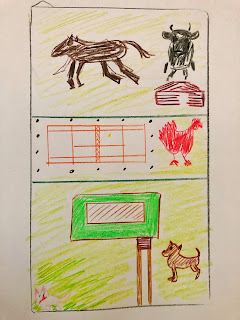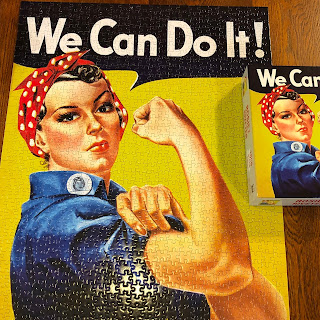Pets, Paddocks and Poles (aka My Dad Dropped a Telegraph Pole on Me)
Once upon a time there was a
family who lived on a hobby farm for many years.
There was always a dog and a cat
around who lived long, happy lives. Except Casper. Casper, the cat, had many
lives. He survived being ran over, poisoned with pool chemicals and having the
tip of his tail severed by a log falling out of a fire, for which he blamed the
dog. Casper was white, making him susceptible to skin cancer, and once the
cancer headed towards his brain, his short but dramatic life was brought to a
close.
Guinea pigs, budgerigars and mice
also became pets at times but were merely fads that caused more grief than joy.
The supposed male guinea pig purchased from a pet store had babies; the budgies
rarely had babies but when they did, had trouble keeping them alive; and when a
mouse was accidentally let loose in the house, the mice were banished, never
allowed to return.
To have a hobby farm and not have
proper farm animals is a sin.
There was once a horse called
Robbie on agistment that nobody in the family were confident enough to ride. He
jumped fences for his own entertainment. A single electric wire was erected at
the top of the fence line. He sniffed it and experienced the shock of a quick
jolt. He turned his back on the fence and in one decisive action, accurately
kicked the wire to the ground with his hind hooves. He continued to jump fences
until his owners sold him a couple of years later.
Next on the scene was Sally, a
goat acquired to be a cheap lawnmower. She was brought home in the back of the
Holden station wagon, ripping the vinyl lining on the ceiling of the car with
her horns. She was a beautiful creature
and supplied the family with milk, the children and the father unaware that the
mother filled regular milk bottles with Sally’s nectar. A few months later
Sally gave birth to a couple of kids and they were then all bundled off to a place
that could handle such a tribe of goats.
A box of cute cheeping chicks was
selected from a farm and carefully carried in the lap of a child for the car
drive back home. The chicks were loved, to the extent that one of them was nurtured
to death within the little boy’s hands. He was distraught once he realised what
he had done. The rest of the chicks quickly grew into chooks and attracted a
neighbour’s dog for an occasional midnight feast. An axe brought the demise of
the remaining few. The mother of the family cried as she plucked them and cried
again as she watched her children eat the result of her labour.
The only real farming success
came in the form of poddy calves. The father would buy a handful of poddy
calves, hand-feed them until they were ready to exist only on grass, fatten
them up and then sell all but one after a couple of years. The last in each lot
was kept for butchering. Daisy was the first. A calf that jumped fences was
named after Tim Forsyth, the Olympian high jumper. Splash appeared to have a
whack of paint dropped on her forehead. Many guests were put off their BBQ
lunch when the children talked about Daisy or Timmy or Splash in loving terms,
appreciating the beasts as pets they loved as well as for the joyous flavour
they produced.
The cow paddock lacked trees. A
public servant’s salary didn’t stretch to the construction of farming
infrastructure so the Dad had to innovate. He loved a good bargain and at an
auction he found a large pile of telegraph poles, cut to three-quarter length.
As a draftsman, he fancied himself as a self-taught architect and could picture
these poles becoming a grand stable. He snaffled them up.
Building the stable walls was
easy enough to do alone, in the beginning, and a pulley system helped to lift
the poles up the wall but on a day when one of the pulleys broke, a second pair
of hands was needed. His wife was too busy with the youngest child so he
enlisted the help of the eldest.
He thought the 11 year old would
be able to easily move the chock of wood up a level while he held the telegraph
pole up, waiting to rest the pole on the wood in its new position, between the
existing wall and the ladder. However, the child had trouble finding a spot
where the wood would take hold and be stable. As the Dad lost his strength he
yelled “run” at the child but she backed into the stable instead of away from
it. The dropped pole bounced on her head (explains everything, her family would
say for the rest of her life), knocking her to the ground, where her legs then
received the final impact of the pole’s fall. She screamed and was momentarily
in awe of her scream echoing around the countryside. Her father lifted the pole
off her legs and tried to help her to her feet but she couldn’t stand. He
carried her back to the house but before entering she said she would try to
walk again. She was able to hobble with help from her father. Still, they took
her to Emergency at the local hospital where it was declared she just had major
bruising. She walked pigeon-toed for several months after that.
Somehow the stables were
completed and was filled with hay and the hay became populated with mice. The
children would chase the mice, unaware of how the mice would have attracted
snakes, brown snakes which could kill with a bite. A baby brown snake once came
into the house and shattered the illusion of home being a safe place. Grass
would grow long where there were no animals to keep it down and the children
would play games within it, boisterous enough to keep the snakes out of sight.
There were telegraph poles
leftover after the stables were built so instead of letting the pile become another
snake haven, holes were dug around an area that was a yet-to-be-completed
tennis court. Relatives from Sydney, who regularly visited at Easter, helped to
insert the poles into place. When there was enough money, chicken wire was
going to be wrapped around the poles to form the tennis court enclosure.
Meanwhile, the tennis court only
existed in imagination. The ground had a bit of a slope so to make the court as
flat as possible a retaining wall had to be built. The material for the wall
came in the form of test concrete cylinders, covered in a yellow sulphate on
each end. Apparently, concrete had to be tested for road worthiness hundreds of
times. Children were paid 5c a cylinder to chip off the sulphate ends. The
Easter rural retreat became a tennis court working bee for several years
running. One year, with the help of a hired bob-cat, the area was flat enough
to erect a net and have a hit and giggle for an hour or so.
The money required for a court
surface and the chicken wire fence never materialised and the tennis court
became no more. The concrete cylinders were repurposed for converting the
carport into an enclosed garage and lining the walls of a nuclear war shelter.
Eventually all that remained of the tennis court, were the fourteen telegraph
poles.
After the children grew up and
were well established as city dwellers, with families and careers of their own,
the mother and father sold the hobby farm and moved to a bigger piece of land.
They continue to live there with their poddy calves, a cat and a dog, but alas,
no telegraph poles or concrete cylinders for building architectural dreams. The
calf-port, however, is a story for another day.



Comments